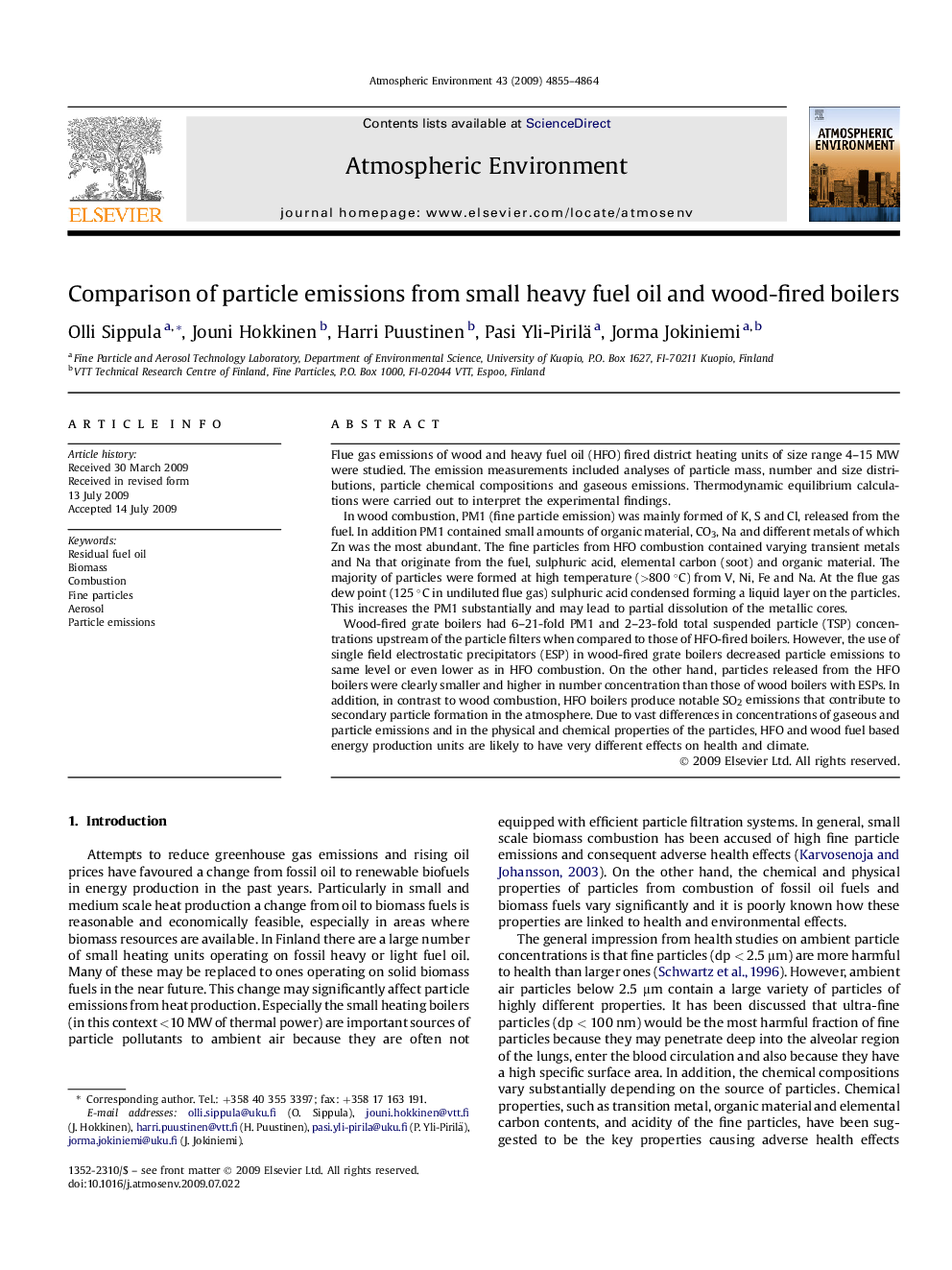| کد مقاله | کد نشریه | سال انتشار | مقاله انگلیسی | نسخه تمام متن |
|---|---|---|---|---|
| 4441294 | 1311101 | 2009 | 10 صفحه PDF | دانلود رایگان |

Flue gas emissions of wood and heavy fuel oil (HFO) fired district heating units of size range 4–15 MW were studied. The emission measurements included analyses of particle mass, number and size distributions, particle chemical compositions and gaseous emissions. Thermodynamic equilibrium calculations were carried out to interpret the experimental findings.In wood combustion, PM1 (fine particle emission) was mainly formed of K, S and Cl, released from the fuel. In addition PM1 contained small amounts of organic material, CO3, Na and different metals of which Zn was the most abundant. The fine particles from HFO combustion contained varying transient metals and Na that originate from the fuel, sulphuric acid, elemental carbon (soot) and organic material. The majority of particles were formed at high temperature (>800 °C) from V, Ni, Fe and Na. At the flue gas dew point (125 °C in undiluted flue gas) sulphuric acid condensed forming a liquid layer on the particles. This increases the PM1 substantially and may lead to partial dissolution of the metallic cores.Wood-fired grate boilers had 6–21-fold PM1 and 2–23-fold total suspended particle (TSP) concentrations upstream of the particle filters when compared to those of HFO-fired boilers. However, the use of single field electrostatic precipitators (ESP) in wood-fired grate boilers decreased particle emissions to same level or even lower as in HFO combustion. On the other hand, particles released from the HFO boilers were clearly smaller and higher in number concentration than those of wood boilers with ESPs. In addition, in contrast to wood combustion, HFO boilers produce notable SO2 emissions that contribute to secondary particle formation in the atmosphere. Due to vast differences in concentrations of gaseous and particle emissions and in the physical and chemical properties of the particles, HFO and wood fuel based energy production units are likely to have very different effects on health and climate.
Journal: Atmospheric Environment - Volume 43, Issue 32, October 2009, Pages 4855–4864